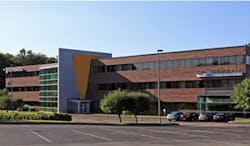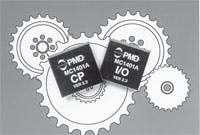The story of Chuck Lewin: How one curious kid came to found a motion-control company
Many kids dream of turning their hobbies into a successful job some day. Chuck Lewin, founder of Performance Motion Devices Inc. (PMD), Lincoln, Mass., and creator of motion processors, was one such kid who made his dreams come true.
As a high school student in Winchester, Mass., Lewin says he “hung around with a small gang of microcomputer hobbyists who lived and breathed the latest products from companies such as Apple Computer, Altair, Radio Shack, Rockwell, and many others.” He showed his entrepreneurial spirit early, having started his first business with a friend in 1979, selling microcomputer software for a now-defunct personal computer company called Ohio Scientific Inc. They closed up shop when they went to college, but he says this was the spark that lit the fire for his software passion.
Practical training
Lewin attended Rensselaer Polytechnic Institute for physics but didn't graduate, and later received a biology degree from Brandeis University. Most of his motion control schooling came from the industry itself, as he got in at the ground level at high-tech companies. He was the second engineer hired at RSA Security, a developer of computer logon authentication systems and RSA algorithm-based encryption systems. He was also the first software engineer at Brooks Automation.
His first practical exposure to motion control came 1987 while working at Alyx Medical, a small Cambridge-based company. He was working on a desktop blood analyzer that used a step motor-based system. Although the company failed, working with basic motion got Lewin excited about using software to control motors.
Lewin used a hands-on approach to programming to understand how it all worked. For example, when he was in high school in 1978, he didn't have access to a 6502 assembler, so to develop a “breakout” game for an early PC, he hand-compiled the entire program and directly entered hex codes into the memory. “While unthinkable today, having that sort of background was helpful in squeezing out the very last bit of performance,” Lewin says. “Even today, this can still be critical for high performance motion control systems.”
Frustration leads to discovery
While working at a manufacturer of semiconductor robotics, Lewin attempted to control a relatively high-end wafer robot with National Semiconductor's LM628. “Although a groundbreaking device at the time, I repeatedly butted my head against the LM628's limits, and finally came to the conclusion that there was an opportunity to develop a higher end product,” he says.
In 1992, he started PMD in the basement of his house in Chelmsford, Mass., using the concept of advanced motion control on an IC for the basis of his business. In less than a year, the first commercial multi-axis motion processor was released. This breakthrough product paired the advantages of IC packaging with sophisticated functions previously available only in board-level motion control products. His first customer was a company called Technology 80 Inc. in Minneapolis.
Soon after, in 1993, PMD made its first high-volume design win to a national textile manufacturer. “The first series was called the MC1400, and receiving the first order was one of the biggest thrills of my life,” Lewin recalls.
PMD's sales continued to grow globally throughout the next decade. In 2003, PMD launched The Magellan Family, a series of multi-axis chips and boards that provide smooth motion, network communications, and multi-motor support. The ION Digital Drive was released in 2006, expanding the company's product offerings to include highly advanced motion control modules. Based on the Magellan chip, this compact, fully enclosed module provides high-performance motion control, network connectivity, and power amplification for dc brush, brushless dc, or step motors.
For more information, visit Performance Motion Devices online.
About the Author
Elisabeth Eitel
Elisabeth Eitel was a Senior Editor at Machine Design magazine until 2014. She has a B.S. in Mechanical Engineering from Fenn College at Cleveland State University.


